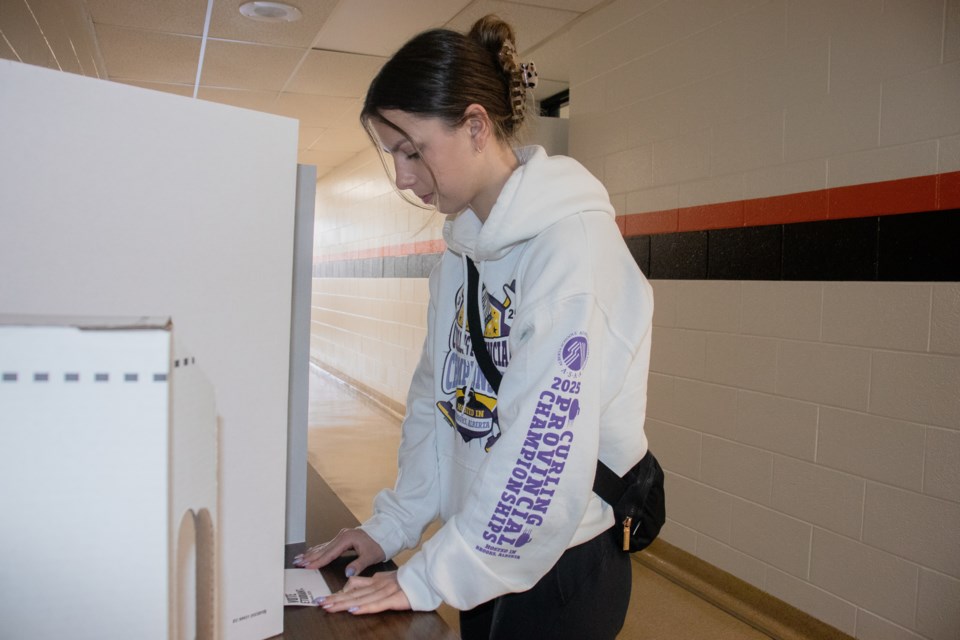LAKELAND – The Conservative Party of Canada won and formed a minority government in a nationwide mock federal election that coincided with the actual federal election. Over 900,000 students across the nation participated in the exercise.
Conservatives won 47 per cent of the 343 seats at the House of Commons, or 165 seats; while the Liberals won 43 per cent or 145 seats to form the official opposition.
In Alberta, 47 per cent of students voted Conservative, allowing the Conservatives to win 85 per cent of Alberta’s 37 allotted seats. The Liberals won four seats, while the NDP won one.
In the Lakeland riding, mock election results mirrored the actual results of the April 28 election, with Conservative representative Shannon Stubbs winning the riding with 58 per cent of the students’ votes. Stubbs received 80 per cent of the actual vote in the federal election.
The mock election was run by Student Vote Canada in partnership with Elections Canada. Student Vote is an initiative by Canadian charitable organization CIVIX.
According to information from CIVIX, the Student Vote Canada national parallel election program takes place in over 7,000 schools across the country.
The objective of the initiative is to introduce students to politics and encourage a habit of democratic participation. Through the program, students explore Canadian political parties and platforms, debate issues, and then cast ballots for candidates running their local constituencies.
Student Vote took place on the same day as the federal election, and students were given the same options on their ballots as those heading to the actual polls last Monday.
Among Lakeland’s participating schools included St. Paul Regional High School. Karrie Foisy, a social studies teacher, helped organize the Student Vote at the school.
“We work very hard to teach kids that being an informed voter is a big part of their responsibility,” said Foisy, adding that without citizens actively fulfilling their responsibilities in Canadian society, democracy risks being shaped by leaders who do not truly reflect the people’s will.
JA Williams (JAWS) High School in Lac La Biche also participated in the mock student voting exercise.
Jake Nowicki, who organized the Student Vote at the school said, “Voting in high school will allow students to recognize the civic responsibility to be an engaged citizen when they turn 18.”
JAWS student Emily Cloutier, who worked the polling station at JAWS, said participating in the exercise made her feel like she was part of the process.
Cloutier said members of the class studied many federal political issues as they got ready for the student vote. She added that there are many issues currently affecting Canada, including a housing crisis.
“I feel like I’m involved in politics,” she said. “I don’t feel like I’m just that little kid who has no say in whatever happens . . . even though we don’t have any say, it just kind of feels like we do.”
Gabby Lemay, a Grade 10 student at JAWS, was another student who cast a vote in the exercise.
“When we turn 18 to go vote, we will know what we’re doing,” she said.
Lindsay Mazzucco, the chief executive officer of CIVIX, spoke about the importance of the student vote.
“Student Vote is more than a simulation — it's a chance for students to see themselves as active citizens and future voters,” said Mazzucco. “Research shows that early experiences with voting can build the habits and confidence that lead to lifelong participation — and teachers across Canada continue to make that possible.”
With files from Chris McGarry



